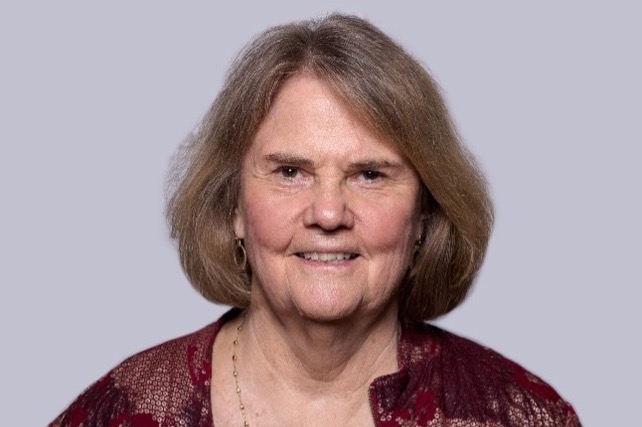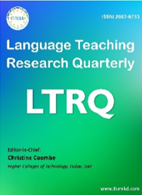Dr. Diane Larsen-Freeman honored with fellowship, journal dedication

Professor emerita cited as 'one of the most influential applied linguists of our time'
February 15th, 2024 | Faculty, SIT Graduate Institute
Accolades are not new to SIT Professor Emerita Diane Larsen-Freeman. Renowned in the field of language learning and second-language acquisition, as far back 1999, she was named by ESL Magazine as one of 30 ESL pioneers of the 20th century. Since then, among her many distinctions, Larsen-Freeman has served as Fulbright Distinguished Chair at the University of Innsbruck, Austria, received the highest honor of the American Association for Applied Linguistics, and one of her recent books won the Modern Language Association’s Kenneth Mildenberger Book Prize.
Now the SIT and University of Michigan professor emerita has two more feathers in her cap. In December, she was elected as a Fellow of the Cognitive Science Society, “a high honor that reflects your impact on the Cognitive Science community, and your sustained record of excellence in research contributions,” wrote Anna Papafragou and Adele Goldberg, Society president and past president, respectively.

In addition, Larsen-Freeman has been honored with the publication of a special edition of the peer-reviewed academic journal Language Teaching Research Quarterly, which features 22 articles celebrating her 50 years of achievements and influence in the fields of language teaching, language learning, second-language development, and teacher education.
“I have always been curious about how we learn,” Larsen-Freeman says in the publication, which invites readers to witness “the ‘becoming’ and ‘being’ … of one of the most influential applied linguists of our time,” according to guest editors Zhisheng (Edward) Wen of Hong Kong Shue Yan University and Hassan Mohebbi of European Knowledge Development Institute in Turkey.
[W]e regularly invited leading methodologists to introduce their methods to our students: Caleb Gattegno, Earl Stevick, and other methodologists presented us with rich and provocative experiences each time they came to visit, and from them and from my colleagues and students, I learned a great deal.
Close friends, colleagues, and collaborators contributed anecdotes about their encounters with Larsen-Freeman. The edition also presents theoretical discussions of key issues in the field of applied linguistics and results of empirical studies pertaining to complexity/dynamic systems theory, grammar learning and teaching, task-based language teaching and writing, and L2 instruction and second language development.
Below are excerpts from an interview with Larsen-Freeman by co-editors Wen and Mohebbi.
Larsen-Freeman talks about how her experience teaching with SIT’s MA in TESOL (MAT) program shaped her landmark 1986 book, Techniques and Principles.
“Techniques and Principles was based on my teaching an approaches course with colleagues at the Graduate School for International Training (SIT). The challenge in writing this book was two-fold. For one thing, per usual, I was learning along with my students. The MAT program was based on the principles of experiential learning. This meant that in order to understand a method, we had to experience it firsthand and subsequently reflect on and analyze our experience. Thus, we regularly invited leading methodologists to introduce their methods to our students: Caleb Gattegno, Earl Stevick, and other methodologists presented us with rich and provocative experiences each time they came to visit, and from them and from my colleagues and students, I learned a great deal.
“The second challenge in writing this book was the question of how to capture the dynamism of a lesson-in-progress in order to help readers appreciate its distinctiveness. I decided that having readers ‘enter’ a classroom where the method was being used and observe and analyze it would work better than having them only read a description of it. And this is what I did with each method in the volume.”
The co-editors ask Larsen-Freeman to name the greatest developments in language teaching methods since the publication of that book. Her response reflects the pedagogy that guided SIT’s renowned MA in TESOL, which in recent years amplified a plurilingual approach to teaching and learning.
“Recent attention has focused on language learners, demonstrating the unique qualities that define each one and recognizing the emotional dimension of language learning and its effect on the learner’s identity. Also, there is a recognition that learners with different identities—refugees, migrants, businesspeople, international sojourners, students, and immigrants—may want and need to develop their language skills differently. Furthermore, not all learners will need to interact with native speakers of the target language, and no language is the province of its native speakers alone, thus calling into question relying on native language usage as a measuring stick. Instead, for many students, instruction should aim for intelligibility, not conformity to native speaker norms,” she responded.
“This awareness and an appreciation of the empowerment that comes with language learning has spurred initiatives to promote social justice, recognizing that even opportunities to learn another language are not equally distributed. These critical initiatives have also helped us acknowledge that the use of the learner’s other languages is not an impediment to additional language learning, but rather can be a resource to be drawn on in facilitating additional learning in the quest for plurilingualism and through practices such as translanguaging.”
Larsen-Freeman calls on researchers and teachers to acknowledge the agency of learners.
"Learners are not passive consumers of input, but rather they navigate their own unique developmental learning trajectories. Teachers who recognize this, and incorporate ‘enabling conditions’ into their lessons will help learners to enact their agency,” she says.
In closing, she concludes: “Some years ago, I wrote about my development as a teacher. I identified three ‘stages’: Learning to teach, learning teaching, and simply learning. I continue to be in the third stage and I wish it to be ever so.”
